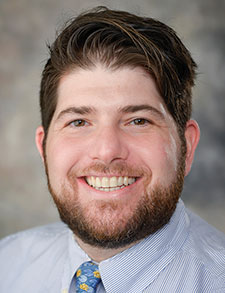In the current surgical training environment, we rely heavily on an established tradition of expert consensus of readiness for graduated responsibility as conceived under Dr. William Stewart Halsted (father of the model for current surgical training programs). One concern with this tradition is the relative subjectivity of the experts who are engaged in the assessment of our trainees and the heavy reliance on their individual experience, judgment, and ability to monitor trainee performance.
Explore This Issue
April 2025There is a wide degree of variability in experience and judgment when rating trainees, even when established frameworks are used, such as the Global Evaluative Assessment of Robotic Skills (GEARS). Dr. Ruben De Groote and his co-authors concluded in their study that “[The interrater reliability] levels of the GEARS assessment [are] poor, and this replicates previous findings on the use of Likert scales in general.” They go on to say, “Given the widespread usage of these types of assessments, this is a worrying observation as a validated test that is demonstrated to be unreliable is by default not valid” (Ann Surg Open. doi: 10.1097/AS9.0000000000000307).
In addition, very few surgeons are formally trained on how to assess and give feedback to trainees. The system has worked for many decades, but some may say that is despite this system as opposed to because of it. This reality was well crystallized and forced into the public eye after the publication of To Err is Human in 2000. The book created a tremendous pressure on training programs to keep patient safety paramount while also improving efficiency and throughput. All academic surgeons understand the constant battle between efficiency, safety, and creating a conducive training environment for residents and fellows.
The role of simulation has expanded over the last few decades to help provide an environment for trainees to have deliberate practice without direct patient risk. Simulation has become a mandatory component of training and assessment of procedural skills in pilots, astronauts, and several other industries, but somehow has not yet become a mandatory component of medical or surgical training or assessment. As technology has advanced with XR and AI, we have an unprecedented opportunity to turn traditional Halstedian training on its head. XR technologies, including VR, AR, and MR, have been in existence since the 1960s but have recently gained mainstream momentum as computing power has rapidly advanced and consumer-level products have come
to market.
XR has become a massive industry, reaching $184 billion in 2024, and it is projected to reach $1.7 trillion in 2032 (Fortune Business Insights. https://tinyurl.com/4r3fkj93). Healthcare-focused XR companies seem to pop up by the dozens every day, and surgical applications of XR have expanded to anatomical viewing, surgical preparation and planning, and even intra-operative XR-assisted surgery.
AI has existed since the 1950s, when Alan Turing published Computing Machinery and Intelligence, and it has exploded in the last decade. Healthcare applications are seemingly limitless. A subset of AI called computer vision has enabled several use cases in surgery, including real-time coaching and mentoring during surgery and objective assessment of skill. Paired with XR, this technology can create a real-time roadmap during surgery with anatomical overlays and real-time surgical guidance.
The natural progression of these technological advancements is to leverage them to create surgical trainees who are as proficient as they can be before direct patient care. In otolaryngology, we often do this in otology with the temporal bone lab, but this has not permeated into any other surgical procedures. During my training, I was required to do 50 stapedectomies with stapes implant placement the night before participating in a stapes surgery with my chair. He always stated that he would know if we did not do the practice the night before, and I have no doubt he could.
However, with XR and AI, we not only have the opportunity to conduct 50 of these procedures, but we can also determine the actual training curves for every individual surgical trainee and realize that some might be ready after 10 sessions, while some may take 100. This would be seamlessly determined by the actual simulation training, all of which occurs on the trainees’ own time without taking up faculty time. Through these AI tutors, we have the potential to “support student learning at a scale previously unimaginable” (Pearson Education. https://tinyurl.com/5548pph8).
Obviously, it is unrealistic to expect every surgical procedure to currently be modeled well enough in XR to provide this type of experience, but that does not mean we shouldn’t strive to create as many as we can. We already have temporal bone XR simulations that provide a great deal of this individualized training, even in patient-specific temporal bone cases. Imagine if the resident can train on the actual patient case in XR in the days to weeks leading up to the case and then, once in the operating room theater, they have done that exact case to objective proficiency. Imagine the effect on patient safety, efficiency, and patient outcomes. I am hopeful we can make that dream a reality.
Conclusions
As discussed here, the answer is not straightforward. Technology offers much hope and hype. When will technology meet the education needs and level of validity needed to add value to our surgical education? When will it reach the level of fidelity needed to truly create a realistic, safer training environment? Please let us know your thoughts and comments.
Dr. Gantwerker is a pediatric otolaryngologist at Cohen Children’s Hospital at Northwell Health in New Hyde Park, N.Y., who has also treated adults and closely follows tech advances in otolaryngology.
Dr. Rameau is an assistant professor and the director of new technologies in the department of otolaryngology–head and neck surgery at Weill Cornell Medical College in New York.

Leave a Reply